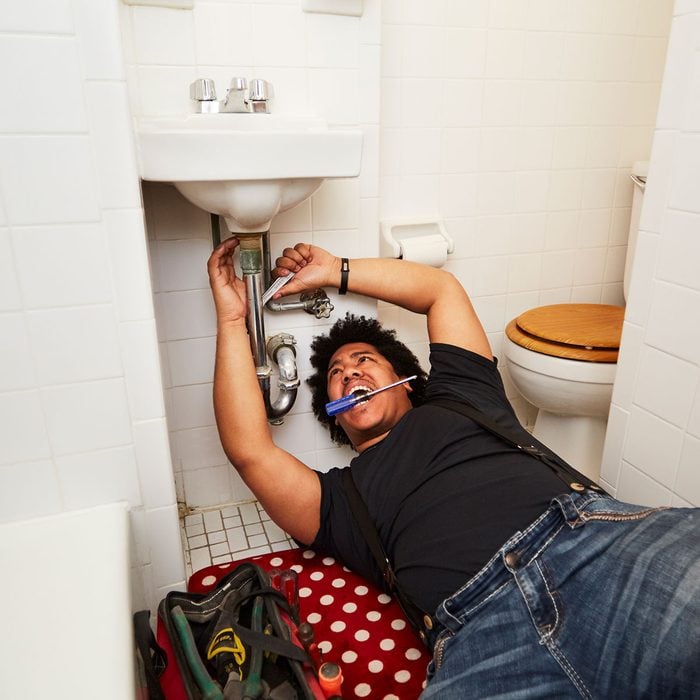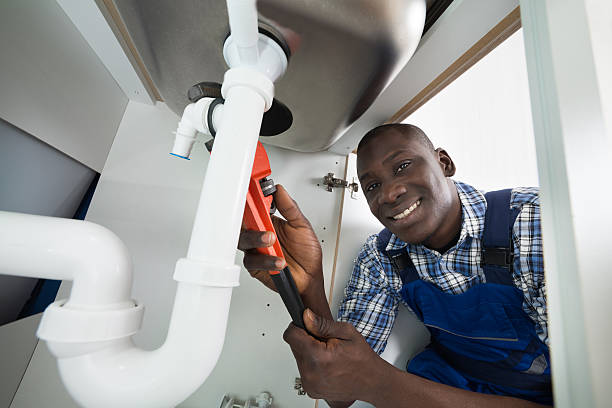Reputable Plumber Alabaster AL for All Your Emergency situation Needs
A Step-by-Step Overview to Reliable Water Heater Setup for Ideal Performance
Beginning on the job of mounting a water heating system is an endeavor that demands precision and an organized strategy for attaining ideal efficiency. As you continue, the details of connecting water supply lines and establishing up reliable electrical or gas links wait for, promising insights right into ensuring effectiveness and integrity.
Picking the Right Water Heater

Following, take into consideration the size and capability of the water heating system. It's essential to assess your family's hot water requirements, which can differ based upon the number of residents and their usage patterns. A system that's also tiny might lead to inadequate warm water, while a large design could cause unneeded power intake.
Efficiency ratings also play a critical function in choice. Try to find hot water heater with high Power Variable (EF) rankings, showing exceptional performance and decreased energy use. Tankless designs, though commonly more costly in advance, offer considerable energy cost savings gradually as a result of their on-demand home heating abilities.
Preparing the Setup Area
Prior to mounting a new water heating unit, meticulous preparation of the installment area is necessary. It's vital to measure the space meticulously to suit the water heating system's dimensions, making certain sufficient clearance around the system for efficient procedure and maintenance.
Next, remove any kind of particles, dirt, or blockages from the website to develop a tidy atmosphere. Inspect the flooring for stability, as the water heating system will need a solid, level surface area to run properly. If necessary, set up a drip frying pan under the system to capture possible leakages or spills, preventing water damage to the surrounding location. In areas prone to seismic task, consider mounting seismic straps to secure the heating unit firmly in place.
In addition, make sure that all necessary devices and products get on hand prior to beginning the setup. This consists of products such as wrenches, screwdrivers, a level, and any added equipment required for protecting the heating unit and placing. A well-prepared installment location sets the structure for an effective water heating system arrangement, optimizing performance and safety.
Connecting Water Lines
When attaching water lines to your newly mounted water heater, it is crucial to make sure that all connections are safe and leak-free to preserve effective procedure and avoid water damage. Begin by determining the cool and hot water supply lines. The cool water inlet is commonly marked with a blue label or a "C", while the warm water outlet is marked with a red label or an "H".
Use flexible water heater connectors to help with a less complicated installation process. Before connecting the adapters, put a plumber's tape around the threaded ends of the water heating unit's inlet and outlet pipes.
When links remain in location, gradually transform on the main water system shutoff. Inspect each link for leakages by aesthetically examining and feeling for moisture. Tighten up links as necessary, and make sure the pressure alleviation valve is appropriately set up, protecting versus excessive stress accumulation.
Setting Up Electrical or Gas Connections
Properly establishing up the electrical or gas connections for your water heating system is an important step to ensure secure and effective procedure. For electric water heaters, begin by confirming that the electrical circuit is compatible with the heater's voltage and amperage demands. Make sure the power supply is shut off at the breaker to stop mishaps. Connect the electric wires to the heater complying with the manufacturer's wiring layout. Usually, this entails attaching the ground wire to the this content environment-friendly terminal, and the staying cords to their corresponding terminals, protecting each with wire nuts.
For gas water heating units, safety and security is paramount. Verify that the gas supply is off prior to proceeding. Connect the gas line to the water heating system making use of a versatile gas port, ensuring it is properly threaded and secured with pipe joint substance or Teflon tape suitable for gas links. Tighten the links with a wrench, making sure not to over-tighten (Drain Cleaning Alabaster AL).
Once links are made, evaluate for any prospective leaks. For gas lines, apply a soapy water remedy to the joints; bubbles show a leak. For electrical connections, ascertain that all circuitry is safe and secure and appropriately insulated, maintaining compliance with neighborhood electric codes.
Changing and checking for Performance
With the electric and gas connections safely in area, the following step is evaluating the functional efficiency of your water heating unit. Begin by very carefully transforming on the water supply and guaranteeing there are no leaks at any of the joints or shutoffs.
Next, execute a detailed assessment to make sure the home heating elements or gas burners are functioning appropriately. For electrical heating systems, utilize a multimeter to confirm if the aspects are drawing the appropriate present. In gas versions, observe the burner flame; it should be stable and blue, suggesting efficient burning.
Change the setups as needed to remove ineffectiveness. Take into consideration carrying out insulation actions, such as adding a water heating unit covering, to even more enhance efficiency by minimizing warmth loss. Additionally, examine the anode rod's problem, as a scrubby rod can minimize efficiency and cause container rust.
Verdict
Efficient hot water heater installation is crucial for making sure optimal performance and power savings. By choosing the appropriate type and dimension, and look at this website carefully preparing the installment area, a structure for success is developed. Securely linking water supply lines his response and very carefully setting up electric or gas connections decrease prospective problems. Thorough testing for leakages and precise thermostat modifications to 120 ° F improve integrity and efficiency. Following these actions promotes long-lasting functionality and energy conservation in residential water furnace.

Effectively setting up the electrical or gas connections for your water heating unit is a critical step to guarantee effective and secure procedure. For electrical water heating systems, start by verifying that the electrical circuit is compatible with the heater's voltage and amperage requirements. Connect the gas line to the water heater using a flexible gas connector, ensuring it is properly threaded and sealed with pipe joint substance or Teflon tape ideal for gas links.